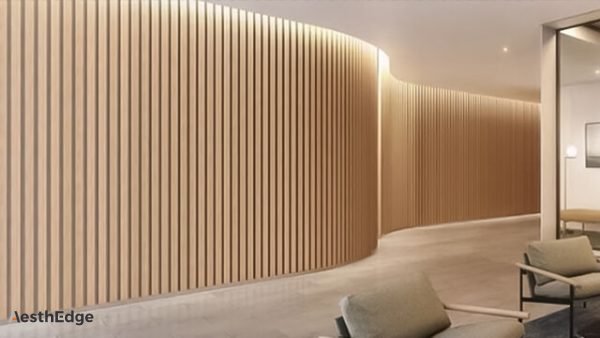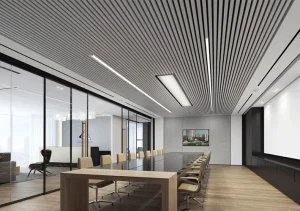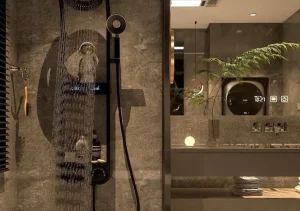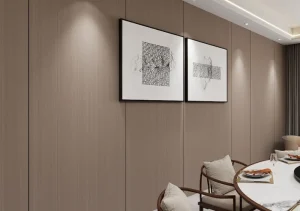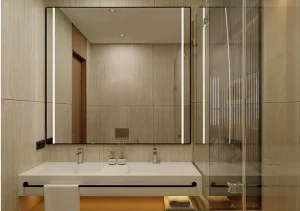Table of Contents
ToggleIntroduction
In the modern construction and decorative materials market, WPC (Wood Plastic Composite) wall panels are increasingly favored for their waterproof, mold-resistant, easy-to-clean, and eco-friendly properties. These panels are widely used in both interior and exterior wall decoration, such as in living rooms, corridors, offices, and public spaces.
As global demand for WPC wall panels grows, more buyers, distributors, and renovation companies are seeking reliable manufacturers to ensure product quality, delivery timelines, and after-sales service. However, among the myriad of suppliers, identifying a truly suitable factory has become a critical challenge.
As a professional WPC wall panel brand, Aesthedge has consistently controlled product quality from the source, offering high-quality, eco-friendly decorative solutions to customers worldwide. This article systematically explores how to screen and evaluate a suitable WPC wall panel factory from multiple dimensions to help you make an informed decision.
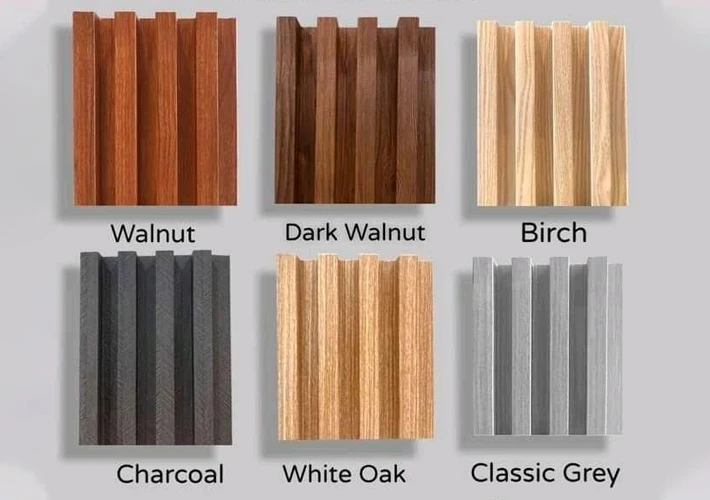
Understanding the WPC Wall Panel Industry
What Is a WPC Wall Panel and Its Advantages
WPC wall panels are composite decorative materials made from wood powder and plastic through high-temperature extrusion. They combine the texture of natural wood with the durability of plastic, offering a premium alternative to traditional wood and PVC materials.
Main Advantages of WPC Wall Panels:
- Moisture and water resistant, not easy to deform;
- Termite and corrosion resistant, suitable for humid environments;
- Various appearances: marble texture, wood grain, fabric texture, etc.;
- Easy installation and low maintenance;
- Recyclable and environmentally friendly.
Major Application Areas:
- Indoor: feature walls, ceilings, TV walls, office decoration;
- Outdoor: balcony walls, building facades, commercial exteriors.
Aesthedge has developed a wide range of WPC wall panel products, widely applied across various global decoration scenarios to meet diverse aesthetic and functional needs.
How to Conduct Market Research
Online Research
- Use B2B platforms like Alibaba, Made-in-China, and Global Sources to preliminarily screen suitable factories;
- Visit official websites to understand product types, factory scale, and equipment;
- Check customer reviews, transaction records, and export destinations to assess international capabilities.
Trade Shows and Industry Associations
- Attend trade shows like Canton Fair, Dubai Big 5, etc., for face-to-face factory engagement;
- Leverage industry associations for recommended suppliers to improve credibility.
Factory Certifications and Capacity Evaluation
- Check for ISO9001, CE, SGS, or other certifications;
- Assess factory size, annual production capacity, and number of employees;
- Evaluate R&D capabilities and customization support.
Evaluating Quality Control Systems
Internal Quality Management
- Raw material inspection: ensure high-quality wood powder and eco-grade plastic;
- Production process control: manage temperature, ratio, molds for consistency;
- Finished product inspection: test size, color, surface finish, bending strength.
Third-Party Testing and Samples
- Request samples for tests like water immersion, impact resistance, heat resistance;
- Engage third-party agencies (e.g., Intertek, SGS) for audits or sample testing.
Product Variety and Customization
- A good factory should offer a wide product range: complete sizes, colors, applications;
- Customization based on project needs: thickness, surface treatment, color matching.
Aesthedge strikes a balance between product quality and design innovation to ensure every purchase delivers excellent value.
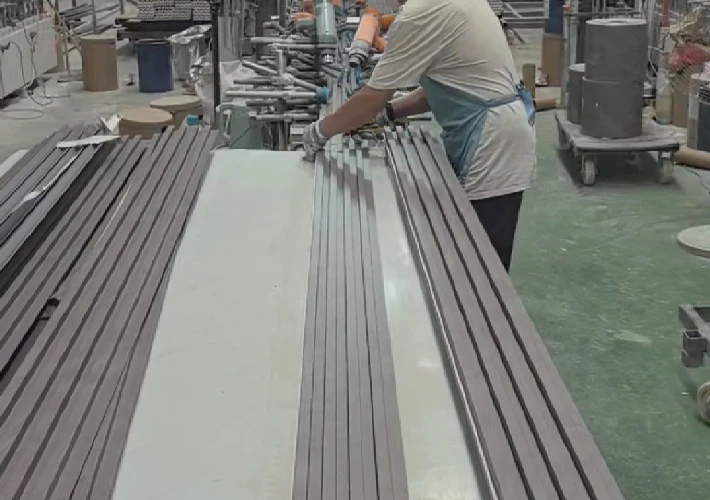
Price Considerations and Negotiation Tips
Key Price Factors
- Material costs (purity and ratio) and processing technologies;
- Labor and energy costs in the factory’s region;
- Order quantity, packaging, shipping preferences, etc.
Requesting and Comparing Quotes
- Request detailed quotes from 3–5 factories, including unit price, MOQ, lead time, and shipping terms;
- Don’t focus only on price — evaluate total value and service quality.
Negotiation Techniques
- Express long-term cooperation intent to gain better rates and scheduling priority;
- Know competitor price ranges as a reference for negotiation;
- Discuss payment terms: down payment ratio, L/C, credit periods, etc.
Factory Location and Logistics
Factory Geography
- Factories close to raw materials may control costs better;
- Proximity to ports (e.g., Guangzhou, Shenzhen, Ningbo) lowers export logistics costs and time.
Logistics and Delivery Time
- Understand the factory’s average production and loading cycles;
- Check for trade terms support (FOB, CIF, EXW), and if export documentation is handled.
Aesthedge works with factories across China, located near key logistics hubs in the Yangtze River Delta and Pearl River Delta to ensure timely and efficient deliveries.
Factory Reputation and Cooperation Reliability
Assessing Factory Reputation
- Review customer feedback, years of cooperation, and export markets;
- Contact existing clients to understand service experience.
Communication Efficiency and Service Awareness
- Evaluate whether the sales team is professional and responsive;
- Check if they have a foreign trade department and fluent English communication.
On-site Visits and Audits
- If possible, visit the factory to inspect offices, warehouses, production workshops, etc.;
- Alternatively, hire a third-party audit with a detailed report.
Aesthedge carefully screens factory qualifications, quality systems, and social compliance to ensure long-term cooperation.
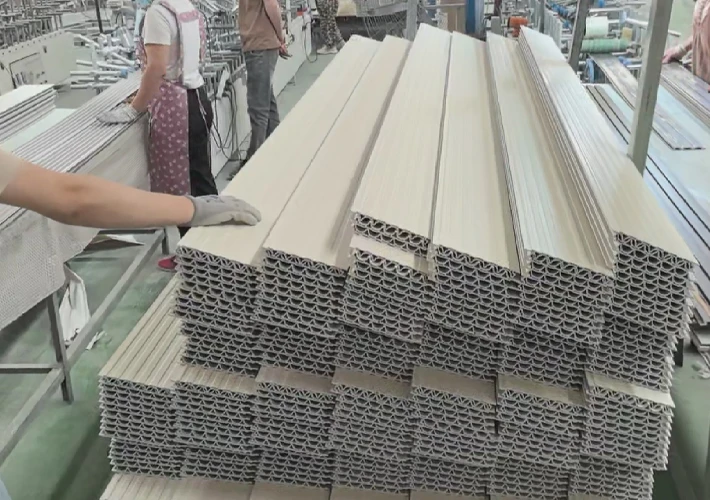
Legal and Compliance Considerations
International Trade Compliance
- Confirm export qualifications and required customs documents;
- Contracts should specify product standards, delivery deadlines, and liabilities.
Intellectual Property Protection
- For proprietary designs or brands, sign NDAs and IP protection clauses;
- Prevent factories from producing or selling replicas.
As a brand focused on IP protection, aesthedge ensures clients’ commercial interests are safeguarded.
Conclusion
Finding the right WPC wall panel factory is not an overnight task — it requires a comprehensive evaluation of factory strength, product quality, pricing strategies, service mindset, and legal compliance. Choosing a reliable manufacturing partner ensures your project lands smoothly and boosts your brand’s competitiveness.
With extensive industry experience, a stable supply chain, and innovative product design, aesthedge is committed to becoming your trusted partner in WPC wall panel sourcing. We hope this comprehensive guide provides valuable reference in your global sourcing efforts and helps you identify a trustworthy long-term partner.

